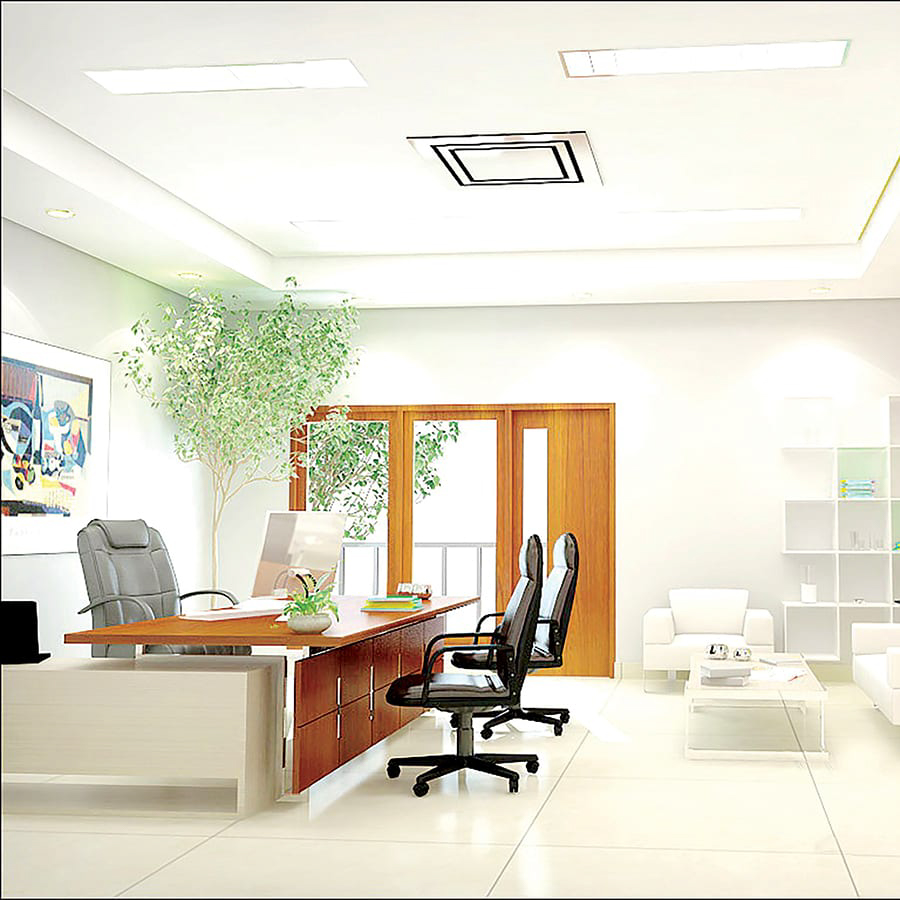Sustainable Ceiling Design: A Sustainable Solution for Sustainable Living

Sustainable Ceiling Design: A Sustainable Solution for Sustainable Living
Introduction
In today’s world, sustainability is a crucial concern when it comes to construction and design. Every aspect of a building or space must be thought out and planned in a way that ensures minimal environmental impact. The design of ceilings is no exception. A sustainable ceiling design can play a significant role in reducing carbon footprint and promoting sustainable living practices.
The Need for Sustainable Ceiling Design
Ceilings are an essential part of any building, and they have a significant impact on the building’s sustainability. Traditional ceiling designs can cause several environmental issues, including high energy consumption for heating and cooling, poor indoor air quality, and water damage. These issues can ultimately lead to environmental degradation and energy waste. Hence, there is a need for sustainable ceiling design.
Sustainability Features of Sustainable Ceiling Design
Sustainable ceiling designs possess several features that promote sustainable living practices. The key features include:
- Energy efficiency
- Water efficiency
- Use of environmentally friendly materials
- Durability
- Indoor air quality
Energy Efficiency
A sustainable ceiling design should be energy-efficient in terms of lighting and temperature regulation. For instance, ceilings with low-emissivity or reflective coatings can reduce the amount of heat that escapes during the cold seasons, thus reducing energy consumption. In addition, energy-efficient lighting systems can help to conserve energy.
Water Efficiency
A sustainable ceiling design should also promote water efficiency. Ceilings that are resistant to moisture and water damage can prevent water from seeping into the walls and causing mold, which is harmful to human health. The use of water-efficient toilets, showers, and faucets can also help to conserve water.
Use of Environmentally Friendly Materials
Sustainable ceiling designs should also prioritize environmentally friendly materials. The use of recycled materials, such as reclaimed wood and recycled glass, can help to reduce resource consumption and waste. The selection of materials that are certified as sustainable by a regulatory body, such as the Forest Stewardship Council (FSC), can also promote sustainability.
Durability
A sustainable ceiling design should be durable and long-lasting to prevent frequent replacements, which can lead to waste. Materials that can withstand harsh weather conditions, such as extreme temperatures and humidity, are key to ensuring the longevity of a sustainable ceiling.
Indoor Air Quality
Lastly, sustainable ceiling designs must prioritize indoor air quality. Ceilings that contain volatile organic compounds (VOCs) can be harmful to human health. Hence, it is essential to choose materials that are low in VOCs and promote good indoor air quality.
Examples of Sustainable Ceiling Designs
There are several examples of sustainable ceiling designs that can promote sustainability. For instance, eco-friendly acoustic ceiling tiles made from recycled paper and cardboard not only reduce waste but also improve indoor air quality. Another example of sustainable ceiling design is green roofs, which use natural vegetation to regulate temperature and retain rainwater.

